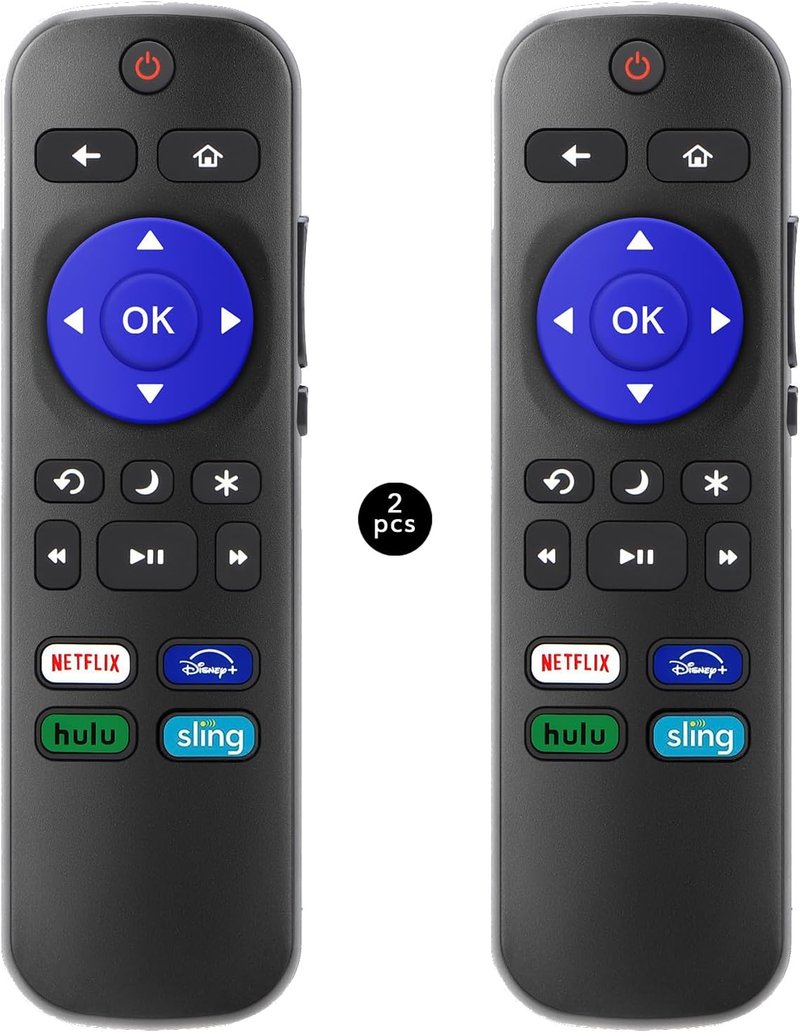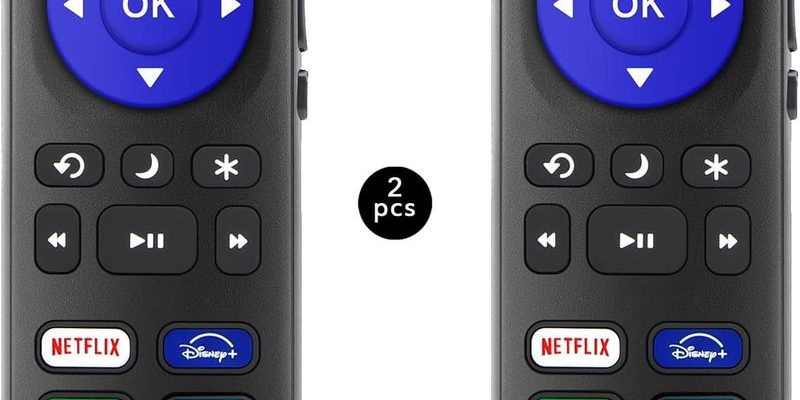
Magnavox universal remotes are the jack-of-all-trades gadgets—meant to control a bunch of different devices without the clutter of six remotes on your coffee table. But universal isn’t a magic word. When it comes to pairing them with a Roku TV, things get a bit… well, not so universal. If you’ve ever squinted at those tiny code listings or tried ‘sync’ mode with no luck, you know the feeling: frustrated, yet weirdly hopeful.
What Makes a Remote “Universal” Anyway?
Let me explain what’s actually going on inside a so-called “universal” remote. When companies like Magnavox use that word, they mean the remote is programmable—able to control different brands and types of devices, from your old DVD player to a shiny new TV. But, and it’s a big but, it relies on specific codes and infrared signals that each device must recognize.
This is like learning a new language. Your Magnavox remote needs to “speak” the right code “dialect” for your Roku TV to listen. Universal remotes come with booklets or online lists of codes that you punch in to sync with your gadget. If your Roku TV isn’t in there, or the code doesn’t work, you’re left waving the remote like a magic wand… with no magic happening.
There are two main types of universal remotes: the classic IR (infrared) ones, like most Magnavox models, and fancier RF (radio frequency) or Bluetooth ones. Roku TVs often use simple IR for basic controls, but their original remotes can tap into Bluetooth for extras, which is something many universal remotes can’t do. So while Magnavox covers lots of ground, it might not cover every corner of Roku’s features.
If you’ve ever synced a Magnavox remote with an old-school TV, you might think “I’ve got this.” Just keep in mind—Roku TVs run their own special operating system, which can be a bit picky about who gets to be in charge.
How Compatible Are Magnavox Universal Remotes With Roku TVs?
Alright, here’s the thing. *Are* Magnavox universal remotes compatible with Roku TVs? The answer is… kind of. For basic stuff—power, volume, mute, and sometimes input switching—a Magnavox universal remote will often work with a Roku TV just fine. You’ll need to use the right code during setup, and the remote must be programmed correctly.
However, don’t expect all the bells and whistles. Things like voice search, dedicated app buttons, or the “home” button might not function at all. Magnavox remotes talk in old-school IR language, while Roku’s own remotes (especially the fancier ones) use a mix of IR and Bluetooth. The universal remote only speaks to the IR receiver in your TV, so anything that relies on a smarter connection—like private listening or app shortcuts—won’t work.
Let’s talk about Roku TVs specifically for a second. These are TVs made by brands like TCL, Hisense, or Sharp, but they run Roku’s software. The TV itself will usually support basic universal remote commands, but the experience won’t feel as slick as with Roku’s own remote. The bottom line? Yes, you can often control your Roku TV’s basic functions with a Magnavox universal remote, but you’ll probably be missing some of the smart features that make Roku, well, Roku.
How to Program (or Sync) a Magnavox Universal Remote With a Roku TV
You might be wondering: “How do I actually get these two to work together?” Here’s what the process usually looks like, step by step. It’s a bit like trying to get your dog to learn a new trick—you need patience, treats (or maybe coffee), and clear instructions.
- Find the right code: Every Magnavox remote comes with a list of codes—either in a paper manual or on the Magnavox website. You’ll want the code for “Roku TV” or sometimes the brand of your TV (like TCL or Hisense).
- Turn on your Roku TV: Make sure the TV is on and ready to receive signals. Obvious, but easy to forget in the excitement.
- Press and hold the ‘Setup’ or ‘Search’ button: This puts your Magnavox remote into programming mode. A light will usually flash or stay solid to let you know it’s ready.
- Enter the code: Type in the code you found earlier. Sometimes you’ll need to try more than one until you hit the jackpot and the TV responds.
- Test the buttons: Try out the basics—power, volume, input, and channel. If anything doesn’t work, repeat the process with another code.
Don’t panic if the first code fails! It can take two, three, or even five tries. Keep going—sometimes compatibility is all about persistence.
If all else fails, there’s usually a “search” mode, where the remote cycles through every possible code until the TV reacts. This is a bit of a last-resort maneuver, like shaking the vending machine when your snack gets stuck. Frustrating, but sometimes it works.
Troubleshooting Common Problems
So you’ve programmed everything, but the remote isn’t behaving. Before you toss it in the junk drawer, let’s go through some troubleshooting steps—trust me, I’ve been there, and sometimes it’s the smallest thing tripping you up.
First, make sure the batteries in your Magnavox remote are fresh and properly installed. Low batteries can make signals weak or inconsistent, which leads to missed commands. (Raise your hand if you’ve slapped a remote thinking it was broken, only to discover dead batteries. Yep, guilty.)
Next, check that nothing’s blocking the IR sensor on your Roku TV. Even a stray coffee mug or the edge of a blanket can mess with the signal. Universal remotes need a clear shot to the front of the TV.
If some buttons don’t work—like the home or input switch—it could be a compatibility issue. Remember, Roku TVs might not recognize every signal the Magnavox remote sends. You can try reprogramming with a different code or looking for a model-specific code instead of a generic one. If you’re still stuck, sometimes resetting the remote (instructions should be in your manual) and starting from scratch can fix weird glitches.
Last but not least, remember that not every Magnavox remote is built exactly the same. Some older models may lack the right codes for recent Roku TVs, so double-check the documentation or consider getting a newer universal remote if needed.
What Features Work—and Don’t Work—With Roku TVs?
It’s fair to expect a universal remote to handle the basics. With Roku TVs, a Magnavox remote can usually handle:
- Power: Turning the TV on and off
- Volume: Up, down, and mute
- Channel: Up and down (sometimes limited, since Roku TVs rely on streaming apps rather than cable channels)
- Input: Switching from HDMI 1, HDMI 2, etc.
But here’s where things get tricky. Don’t expect:
- Voice search: Magnavox universal remotes don’t support voice commands.
- Dedicated Roku buttons: Buttons for Netflix, Hulu, or the Roku home screen typically won’t work unless your Magnavox remote specifically supports them, which is rare.
- Private listening: Roku’s feature for plugging headphones into the remote won’t work at all.
If you mostly watch live TV or use your Roku TV as a monitor, a Magnavox remote should be enough to get by. But if you love flipping through streaming apps, customizing settings, or using voice search, you’ll miss the original remote pretty quickly.
Magnavox Universal Remote vs Roku Remote: Which Should You Use?
Here’s a question almost everyone runs into at some point—should you bother with a universal remote or stick with Roku’s own remote? Each has its own vibe.
A Magnavox universal remote is great for simplifying your setup. If you’ve got a soundbar, Blu-ray player, and Roku TV, having one remote is handy. But it’s a “Jack of all trades, master of none” situation. You’ll lose some features—especially if you’re used to jumping straight to your favorite apps with a single button.
Roku’s own remotes, on the other hand, are tailor-made for their TVs and streaming gadgets. They’re small, easy to use, and you get all the smart features. If you can find your original Roku remote (or order a replacement), it’ll give you the smoothest experience.
Personally, I keep a universal remote in the living room as backup, but I still reach for the Roku remote for anything beyond channel surfing. It really just comes down to what you use your TV for most.
Alternatives & Other Universal Remotes
If your Magnavox remote isn’t working out—or if you want more features—there are other universal remotes out there. Logitech’s Harmony remotes, for example, support a ton of devices (though they’ve become harder to find since being discontinued). Some GE and RCA universal remotes have better support for Roku TVs and even include Roku-specific buttons.
Here’s the catch: not all universal remotes are created equal. Some newer models are designed specifically to support smart TVs and streaming devices, even including shortcut buttons for Netflix or Hulu. If you’re shopping for a replacement remote, look for mentions of “Roku TV compatibility” and IR + Bluetooth support. This gives you a better shot at full functionality, rather than just the basics.
If you’re serious about one-remote-to-rule-them-all, it’s worth spending a bit more for a model with proven smart TV support. Otherwise, you might end up in the same boat—half the features, double the frustration.
Resetting or Replacing Your Magnavox Remote
Let’s say your Magnavox remote has seen better days. Maybe it’s unresponsive, or just flat-out refuses to sync, even after changing the batteries and codes. Sometimes, a full reset can bring it back to life. Most Magnavox manuals will have a specific section about resetting the remote—usually, it means holding down the “Setup” button for a certain number of seconds, or removing the batteries and pressing every button. (Kind of like the remote world’s version of turning it off and on again.)
If a reset doesn’t work, it might be time to retire the remote or upgrade to a newer model. Newer Magnavox universal remotes are often better equipped for smart TVs, including Roku models. Be sure to look for remotes with explicit Roku TV code support.
And if none of the universal options are working for you? There are always replacement Roku-brand remotes available online—sometimes, that’s just the simplest way to go.
Final Thoughts: Should You Use a Magnavox Universal Remote With Your Roku TV?
Here’s the bottom line: Magnavox universal remotes are mostly compatible with Roku TVs when it comes to the basics. If all you need is to turn your TV on, adjust the volume, and maybe change inputs, it’ll usually get the job done—*after* you’ve worked through the right code and a bit of troubleshooting.
But if you’re hooked on streaming apps, voice controls, or just want the TV to feel as smooth and “smart” as possible, you’ll probably want to stick with Roku’s own remote (or another high-end universal remote built for smart TVs). No shame in having a backup, though—I keep mine handy for guests or when the original remote goes missing under the couch.
In the end, using a Magnavox remote with your Roku TV is kind of like putting a good cover band in for the main act. It won’t hit every note, but for most nights, it gets the job done. If you run into trouble, remember: patience, fresh batteries, and a willingness to try a few codes will usually sort things out. And if not, hey—at least you’re now a pro at TV remote troubleshooting!
